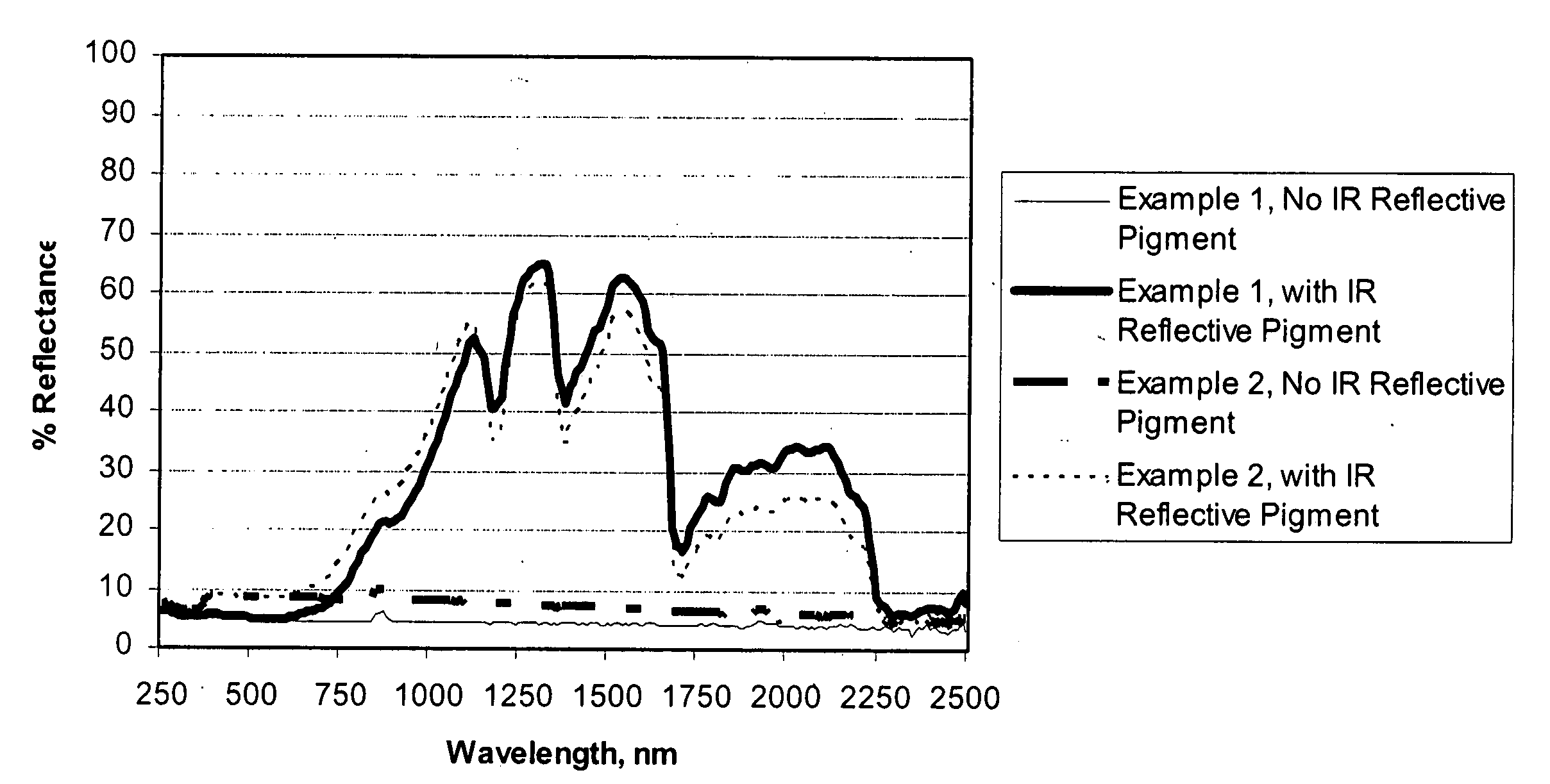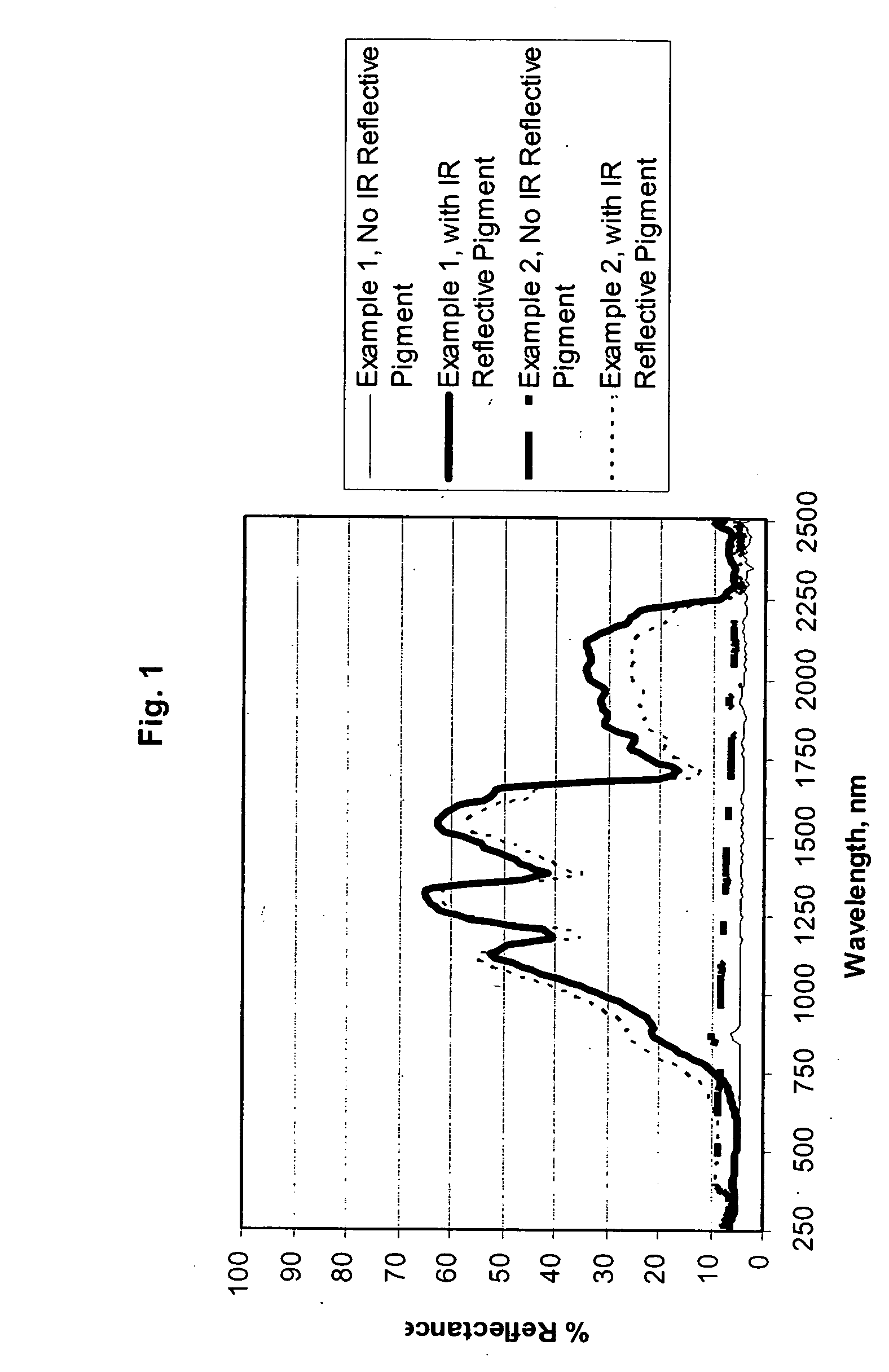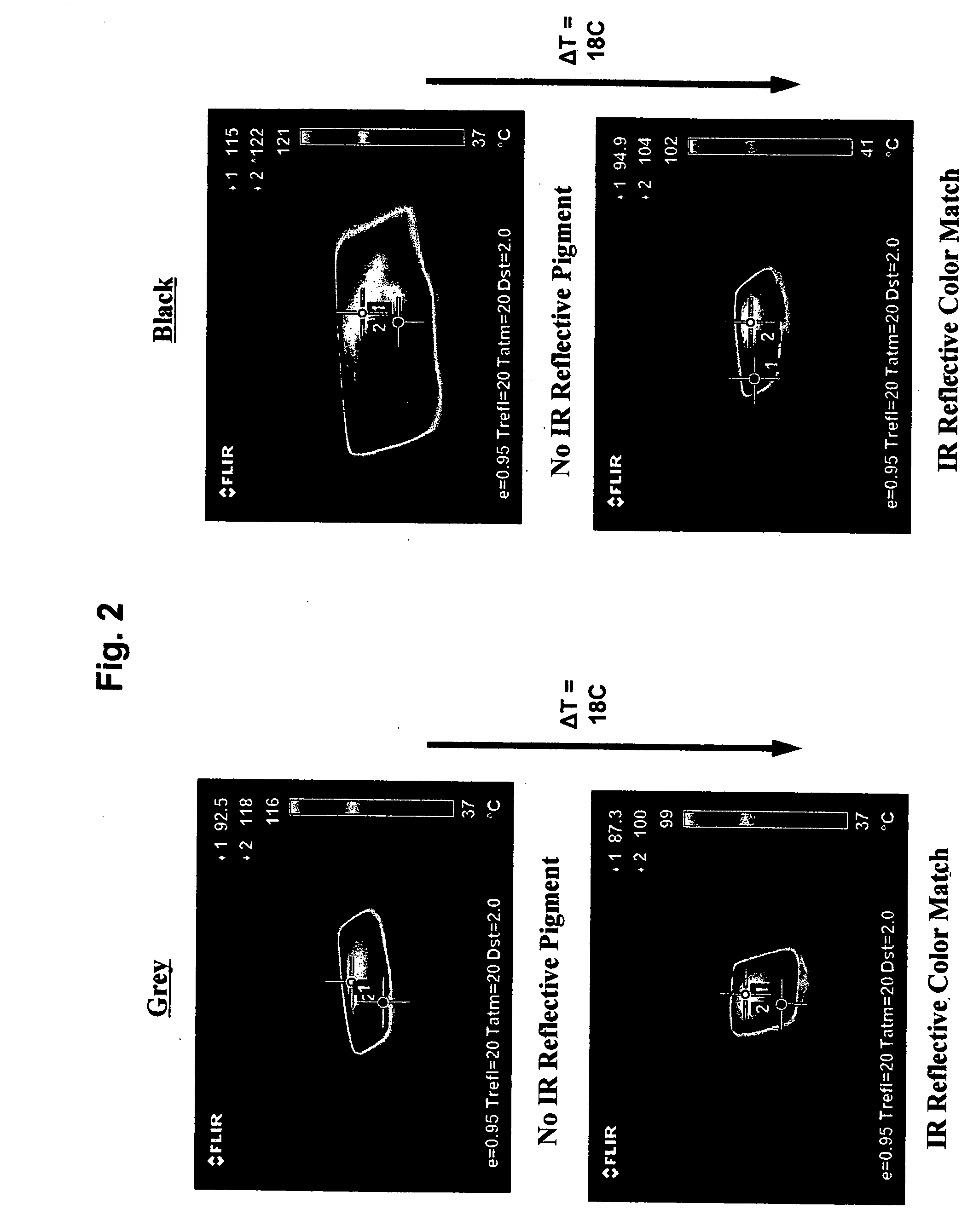Infrared reflective pigments in unpainted automotive plastics
a technology of reflective pigments and automotive plastics, applied in the field of plastic compositions, can solve the problems of structural warping in many plastic formulations, and achieve the effect of reducing the heat build-up of plastic automotive vehicle parts
- Summary
- Abstract
- Description
- Claims
- Application Information
AI Technical Summary
Benefits of technology
Problems solved by technology
Method used
Image
Examples
example 1
[0053]Two polypropylene compositions were prepared by standard techniques. Both compositions were nominally black in color; one of the compositions utilized standard non-IR reflective colorants, while the other composition utilized an IR reflective CICP colorant. The IR reflective CICP colorant was added to the polypropylene at less than about 2 wt. %. The samples were measured for color match, and then tested for IR reflectance using a Devices and Services Co. (Dallas, Tex.) Model SSR solar spectrum reflectometer. The IR reflectance results are presented in FIG. 1.
[0054]The results demonstrate the increase in IR reflectance achieved by incorporating IR reflective CICP into the polypropylene composition.
[0055]Sheets of each composition were then prepared and measured for their ability to resist heat build-up upon exposure to an IR heat source as further detailed in ASTM D 4803-97 Test Method. As measured by a thermal imaging camera, the sample sheet containing the IR reflective CICP...
example 2
[0057]Two polypropylene compositions were prepared by standard techniques. Both compositions were nominally gray in color; one of the compositions utilized standard non-IR reflective colorants, while the other composition utilized an IR reflective CICP colorant. The IR reflective CICP colorant was added to the polypropylene at less than about 2 wt. %. The samples were measured for color match, and then tested for IR reflectance using a Devices and Services Co. Model SSR solar spectrum reflectometer. The IR reflectance results are presented in FIG. 1.
[0058]The results demonstrate the increase in IR reflectance achieved by incorporating IR reflective CICP into the polypropylene composition.
[0059]Sheets of each composition were then prepared and measured for their ability to resist heat build-up upon exposure to an IR heat source as further detailed in ASTM D 4803-97 Test Method. As measured by a thermal imaging camera, the sample sheet containing the IR reflective CICP had a maximum t...
PUM
| Property | Measurement | Unit |
|---|---|---|
| wavelength | aaaaa | aaaaa |
| wavelength | aaaaa | aaaaa |
| tensile elongation | aaaaa | aaaaa |
Abstract
Description
Claims
Application Information
 Login to View More
Login to View More - R&D
- Intellectual Property
- Life Sciences
- Materials
- Tech Scout
- Unparalleled Data Quality
- Higher Quality Content
- 60% Fewer Hallucinations
Browse by: Latest US Patents, China's latest patents, Technical Efficacy Thesaurus, Application Domain, Technology Topic, Popular Technical Reports.
© 2025 PatSnap. All rights reserved.Legal|Privacy policy|Modern Slavery Act Transparency Statement|Sitemap|About US| Contact US: help@patsnap.com



